#HumanPotential
Explore tagged Tumblr posts
Text
The Human Mind is Truly Remarkable
by Thomas Marsh-Connors Angry British Conservative Blog
We live in an age obsessed with machines artificial intelligence, robots, algorithms, and self-driving cars. And yet, every so often, something as simple as tossing your phone in the air reminds you: that nothing mankind has created comes close to the brilliance of the human brain.
Earlier today, while chatting with a mate on the phone, I found myself instinctively throwing my iPhone in the air and catching it. Over and over. Absent-mindedly. Without even thinking about it.
And then it hit me: How the hell is my brain doing this?
I wasn’t consciously focusing on catching the phone. I wasn’t calculating trajectory or distance. I wasn’t telling my fingers when to close or where to move. I was having a conversation and yet, somehow, another part of me was tracking a moving object in space, adjusting my hand’s position in real-time, compensating for motion, light, gravity, and muscle tension. All without conscious effort.
Let me tell you something: that’s not normal. At least, it shouldn't be. It’s not something we should take for granted. It’s miraculous.
A Symphony of Silent Genius
Your brain is a conductor and your body is the orchestra. Just to perform this simple task (tossing and catching a phone), dozens of brain regions coordinate perfectly:
The motor cortex activates your muscles.
The cerebellum controls timing, precision, and balance.
The visual cortex tracks the phone’s arc.
The dorsal stream predicts where the phone will land.
Proprioception (your sixth sense) tells you where your hand is in space.
Reflexes make tiny last-second adjustments.
And the best part? You don’t have to think about any of it.
You're running two separate but perfectly synchronized processes one verbal (talking to your friend) and one physical (catching your phone). And both are happening seamlessly. Your brain is splitting tasks, assigning them to different areas, prioritizing efficiently, and updating inputs constantly. That’s not just multitasking that’s a level of organic processing power no AI system has ever come close to.
We Are Fearfully and Wonderfully Made
As a Christian, this sort of thing only deepens my awe. You could spend your entire life studying neuroscience and still not touch the depths of how the mind works. The way the brain governs the body silently, precisely, and with effortless grace speaks of something far greater than random chance or chemical coincidence. It’s design, not chaos. Order, not noise.
And while Big Tech wants us all to marvel at the “latest breakthrough” in silicon intelligence, perhaps we ought to spend a bit more time being blown away by the carbon-based intelligence sitting between our ears.
Your mind is not just remarkable it’s sacred.
So next time you find yourself tossing your phone, catching a mug without spilling the tea, or typing a text while crossing the road without getting flattened just pause. Marvel. Respect the machinery you’ve been gifted.
Because the most powerful computer on earth… is you.
#HumanMind#Neuroscience#CognitiveScience#MuscleMemory#Proprioception#BrainFunction#MotorSkills#MindBodyConnection#Consciousness#ChristianConservative#DivineDesign#OrganicIntelligence#AIvsHuman#MentalMiracle#GodsCreation#EverydayMiracles#HumanPotential#BrainPower#ModernPhilosophy#ThinkDeeply#new blog#today on tumblr
6 notes
·
View notes
Text
The Elusive Spark: Untangling the Threads of Genius, Giftedness, and Emerging Intelligence
Human intelligence, a multifaceted tapestry woven with threads of logic, creativity, intuition, and adaptability, remains one of the most intriguing and debated subjects in science and philosophy. While standardized tests attempt to quantify this elusive quality, the true nature of intelligence eludes simple measurement. This article delves into the complex nuances of human intelligence, exploring the distinctions between genius, giftedness, and the burgeoning concept of “emerging” intelligence, all the while acknowledging the limitations of our current understanding.

Giftedness: Nurturing the Seeds of Potential
Giftedness, often identified in early childhood, typically manifests as exceptional aptitude in a specific domain, be it mathematics, language, music, or visual arts. These individuals possess an innate ability to learn and master new concepts quickly, often demonstrating advanced problem-solving skills and an insatiable curiosity within their chosen field. However, giftedness is not a monolithic trait. It encompasses a diverse spectrum of abilities and talents, each requiring unique nurturing and educational approaches to fully blossom.

Genius: The Dawn of Revolutionary Insights
Genius, a term often imbued with a sense of awe and reverence, represents a rare and extraordinary level of intellectual prowess. Geniuses are not merely adept at problem-solving; they are pioneers, forging new paths of understanding and reshaping the very landscape of their disciplines. Think Einstein’s theory of relativity or Mozart’s symphonies — groundbreaking contributions that fundamentally altered our perception of the universe and the possibilities of human expression. Genius, unlike giftedness, often transcends a single domain, encompassing an ability to connect seemingly disparate ideas and synthesize novel perspectives.

Emerging Intelligence: The Unfolding Enigma
A relatively nascent concept, “emerging” intelligence suggests a dynamic and evolving understanding of intellectual capacity. It challenges the traditional, static view of intelligence as a fixed attribute, instead positing that intelligence can emerge and develop throughout life, influenced by a complex interplay of genetic predisposition, environmental factors, and personal experiences. This perspective emphasizes the potential for growth and adaptation, highlighting the plasticity of the human brain and its remarkable ability to rewire and reorganize itself in response to new challenges and learning opportunities.

The Interplay of Nature and Nurture
While the debate surrounding the relative contributions of nature versus nurture in shaping intelligence continues, the prevailing consensus points toward a complex interplay of both. Genetic predisposition undoubtedly lays the foundation for cognitive abilities, but the environment plays a crucial role in nurturing and cultivating these innate potentials. Access to quality education, enriching experiences, and a supportive social environment can significantly impact an individual’s intellectual development and unlock hidden talents.

Beyond the IQ Test: Embracing the Multiplicity of Intelligence
Standardized tests, while providing a useful benchmark for certain cognitive skills, fail to capture the full spectrum of human intelligence. They often prioritize logical-mathematical reasoning and verbal comprehension, neglecting other crucial aspects such as emotional intelligence, creativity, and practical skills. Howard Gardner’s theory of Multiple Intelligences, which proposes eight distinct types of intelligence — including musical, spatial, interpersonal, and bodily-kinesthetic — offers a more holistic perspective, acknowledging the diverse ways in which individuals can excel and contribute to society.
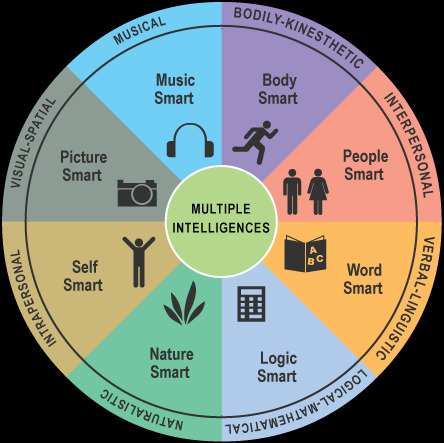
The Uncharted Territory of Potential
The concept of emerging intelligence underscores the limitations of our current understanding of human potential. It suggests that we may only be scratching the surface of what the human mind is capable of achieving. As neuroscience and cognitive psychology continue to advance, our comprehension of intelligence will undoubtedly evolve, revealing new dimensions and unlocking further possibilities for individual growth and societal advancement.

Conclusion: The Ongoing Quest for Understanding
The quest to unravel the mysteries of human intelligence is a journey that has captivated thinkers for centuries. While we may never fully comprehend the elusive spark that ignites genius or the intricate interplay of factors that shape intellectual development, our ongoing exploration of this fascinating realm continues to yield valuable insights. By embracing a more nuanced and holistic understanding of intelligence, we can foster a more inclusive and supportive environment where individuals of all abilities can thrive and contribute their unique talents to the world.
#Intelligence#Giftedness#Genius#EmergingIntelligence#Psychology#Neuroscience#Education#Cognition#HumanPotential#MultipleIntelligences#Talent#Creativity#Innovation
4 notes
·
View notes
Text
🔊 “Mark Romero on Wisdom Synergy”
🌟 Still buzzing from last night’s Wisdom Synergy session with the amazing @MarkRomeroMusic! Mark turned neuroscience, ancient acoustics, and pure heart into a sonic journey that had the chat lit with light-bulb emojis and shoulders collectively dropping. If you’ve ever wondered how 528 Hz can melt stress or how sound literally rewires our energy, you NEED this replay. Mark, thank you for…
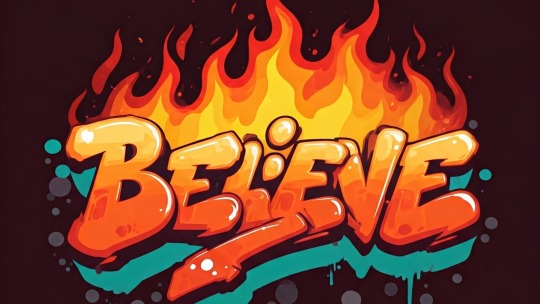
View On WordPress
#hiddentruths#huglife#love#podcast#real#respect#selfempowerment#share#wisdomsynergy#432Hz#528Hz#HumanPotential#MarkRomero#SoundHealing#VibrationalMedicine
0 notes
Text
The Psychology Behind Why 78% of People Never Reach Their Full Potential

Watch FULL video
🧠 Discover the hidden psychology that's keeping you from reaching your full potential. This video explores Carl Jung's "Shadow Self" theory and reveals why 78% of people never unlock their true capabilities.
In this deep dive into shadow psychology, you'll learn:
✅ What your Shadow Self is and how it controls your life
✅ The 3-step Shadow Integration technique that changed everything
✅ Why successful people still feel empty inside
✅ Research-backed methods to unlock your suppressed potential
✅ How to identify and integrate your hidden strengths
🔬 FEATURED RESEARCH:
- University of California study on human potential
- MIT neuroscience findings on shadow suppression
- Zurich Institute psychology research results
This isn't about positive thinking or motivation - this is about confronting the psychological barriers that keep you trapped below your potential.
Ready to face your shadow and unlock who you're truly meant to become?
📚 RECOMMENDED RESOURCES:
- Carl Jung's "Man and His Symbols"
- "Meeting the Shadow" edited by Connie Zweig
- Research papers linked in comments
🎯 NEXT VIDEO: Mind Control Protocols for 10x Focus - Subscribe and hit the bell!
💬 COMMUNITY: Share your shadow integration experience in the comments below.
---
DISCLAIMER: This content is for educational purposes. For serious psychological concerns, please consult a qualified mental health professional.
Confront your shadow self and discover the dreams you've buried!
#PersonalGrowth#MentalHealth#Authenticity#SelfDiscovery#Psychology#CarlJung#SelfImprovement#Mindset#HumanPotential#ShadowSelf#PersonalDevelopment#SelfAwareness#ShadowWork#JungianPsychology#UnlockYourPotential#AuthenticSelf
1 note
·
View note
Text
The Quantum Resonance: Exploring the Soul's Blueprint in the Fabric of Reality

The Soul as a Quantum Information Field
Imagine your soul not as a ghost or a spirit, but as a kind of dynamic information field, like a constantly flowing quantum energy pattern. This field isn't limited by space or time, and it's the source of your unique consciousness and sense of self. Now, picture your DNA not just as a biological instruction manual, but also as a kind of memory chip for this information field. It stores patterns and data from your past, not in the way your brain remembers events, but as a blueprint of your experiences. This quantum soul field and your DNA are constantly interacting, like a radio antenna receiving and transmitting signals. This interaction shapes who you are, influencing your traits, talents, and even your deepest feelings. It suggests that consciousness isn't just a product of your brain, but a fundamental part of reality, connected to your physical body through this quantum interplay. This is a new way of thinking about the soul, one that blends science and the mysteries of our existence, suggesting that we are all interconnected through a vast, informational web
Introduction: Beyond the Materialist Paradigm
For centuries, humanity has grappled with the enigma of consciousness, the subjective experience that defines our existence. The dominant scientific paradigm, rooted in materialism, has sought to explain consciousness as an emergent property of complex brain activity. While neurobiology has made remarkable strides in mapping neural pathways and identifying correlations between brain states and mental phenomena, it has yet to fully unravel the fundamental nature of consciousness itself. We propose an alternative framework, one that acknowledges the limitations of a purely materialist approach and ventures into the realm of quantum mechanics to explore the possibility of a non-local, informational substrate – what we might call the soul – intricately linked to our physical being through the very fabric of our DNA.
The Quantum Soul: A Fluid of Potential
We posit that the soul, rather than being an ethereal, intangible entity, might be better understood as a quantum fluid. This isn't a fluid in the classical sense, but rather a dynamic, non-local field of potential, operating on principles beyond the limitations of classical physics. Quantum mechanics, with its concepts of superposition, entanglement, and non-locality, provides a framework for understanding how information can exist beyond the constraints of space and time. This quantum fluid, we propose, is the fundamental substrate of consciousness, the source of our subjective experience and our sense of self.
The notion of a "fluid" is significant. It suggests a dynamic and adaptable entity, capable of interacting with its environment and undergoing transformation. It isn't a static, fixed object but rather a constantly evolving field of potential. This aligns with the observation that our personalities and perspectives are not immutable but rather develop and change throughout our lives.
DNA: The Soul's Genetic Memory
If the soul is a quantum fluid, then how does it interact with the physical world? We propose that DNA, the very blueprint of our biological existence, acts as a crucial interface. DNA, far from being merely a repository of genetic information, might also serve as a kind of "memory storage" for the soul. This isn't memory in the traditional sense of episodic recall, but rather a repository of informational patterns, a record of the soul's journey through various experiences and incarnations.
This genetic memory, encoded within the complex structure of DNA, might explain the phenomena of inherited traits, predispositions, and even seemingly inexplicable talents or fears. It suggests that we are not merely products of our current environment but also carry within us the echoes of our past, encoded in the very fabric of our being.
The Interplay: Quantum Resonance and Information Transfer
The relationship between the quantum fluid soul and DNA is not one of simple cause and effect, but rather a complex interplay of resonance and information transfer. The quantum fluid, with its inherent non-locality, might influence the expression of genes, while DNA, in turn, might act as an antenna, receiving and transmitting information from the soul. This creates a dynamic feedback loop, a constant exchange of information that shapes our physical and psychological development.
This model suggests that consciousness is not merely a product of brain activity but rather a fundamental aspect of reality, intricately linked to our physical being through the quantum realm. It proposes a unified system where the soul, as a quantum fluid, is not separate from the body but rather deeply integrated into it through the complex architecture of DNA.

A Glimpse Beyond the Veil: Echoes in Ancient Wisdom
While our primary lens is scientific, it's worth noting that some ancient texts, often dismissed as mere mythology, seem to resonate with these ideas. The Quran, for instance, speaks of a "ruh" or spirit, breathed into the body, suggesting a pre-existing essence that animates the physical form. The Book of Enoch describes celestial beings and their interactions with the earthly realm, hinting at a reality beyond our everyday perception. The Gnostic Gospels, such as the Gospel of Thomas, the Gospel of Truth, and Pistis Sophia, explore the nature of consciousness and the soul's journey, often using metaphorical language that might be interpreted as alluding to the non-local and fluid nature of the soul.
These are not endorsements of any specific religious doctrine, but rather acknowledgements that the human quest to understand the soul is ancient and ongoing. These texts, interpreted through a scientific lens, can offer valuable insights into the deeper questions about our existence.
The Path Forward: Exploring the Quantum Soul
The proposed framework of a quantum fluid soul with DNA memory is a hypothesis that demands further investigation. We need to develop new methodologies and technologies to explore the quantum realm and its potential connection to consciousness. This might involve advancements in quantum biology, neurophysics, and even the development of new forms of biofeedback that can detect subtle quantum interactions.
The journey to understand the soul is not just a scientific endeavor but also a deeply personal one. It requires us to be open to new possibilities, to challenge our assumptions, and to embrace the mystery of our existence. The quantum resonance between the soul and our physical being is a complex and multifaceted phenomenon, one that promises to reveal profound insights into the nature of consciousness and our place in the universe. It's a journey that we must embark on with both scientific rigor and a sense of awe and wonder.
Conclusion: A Call to Exploration
The proposed model of a quantum fluid soul with DNA memory is not a definitive answer but rather a framework for further exploration. It is a call to move beyond the limitations of a purely materialist paradigm and to embrace the possibility of a reality that is far more complex and interconnected than we currently understand. It is a call to explore the depths of our being, to unravel the mysteries of consciousness, and to discover the true potential of the human experience. The journey has just begun.
#QuantumSoul#DNAmemory#Consciousness#QuantumBiology#NonLocalConsciousness#SoulScience#SpiritualScience#QuantumPhysics#GeneticMemory#InformationField#BeyondMaterialism#UnifiedReality#SoulJourney#AncientWisdom#GnosticGospels#Enoch#Quran#Metaphysics#InnerExploration#MysteryOfBeing#HumanPotential#QuantumMind#SpiritualEvolution#NewParadigm#ConsciousnessResearch#ScienceAndSpirituality#Interconnectedness#ExistentialQuestions#FutureOfScience#MindBodyConnection
0 notes
Text
Human Intelligence vs AI - A New Era of Coexistence
Share your thoughts on AI and human intelligence below!
In this digital age, where machines seem to be getting smarter by the minute, we’re faced with a sort of digital mirror reflecting on what it means to be human. This article isn’t just about how AI is changing our world; it’s about how it’s challenging us to redefine our intelligence, our work, and our essence. From the AI systems that can now diagnose diseases faster than human doctors to the…
#AI#AI and education#AI ethics#AI in finance#AI in healthcare#AI job market#AI Regulation#aiandeducation#aiethics#aiinfinance#aiinhealthcare#aijobmarket#airegulation#human intelligence#human potential#humanintelligence#humanpotential#o#societal impact#societalimpact
0 notes
Text
Is It Possible to Jump From Space to Earth?
Can we ever leap from the edge of space to Earth, or are we bound by the daunting challenges of extreme heat, orbital mechanics, and technological limitations?
Read the article here: https://enjoyfreefall.com/is-it-possible-to-jump-from-space-to-earth/
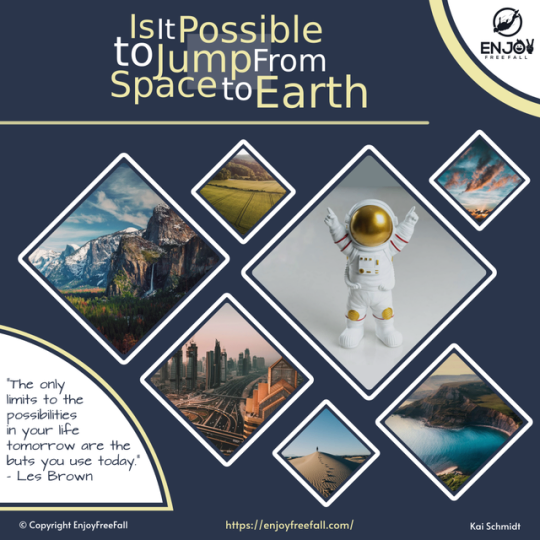
#SpaceJump#EdgeOfSpace#JumpFromSpace#ExtremeSports#AdrenalineRush#HumanPotential#SpaceExploration#SkydivingFromSpace#FutureOfAdventure#BreakingLimits#OuterSpaceDreams#OrbitalMechanics#HighAltitudeJump#ThrillSeekers#PushingBoundaries#AdventureAwaits#EnjoyFreeFall
0 notes
Text
Original Intelligence: Unveiling the Ancient Paradox

Imagine a hidden intelligence that predates recorded history—a consciousness so vast, it has whispered through ancient texts, folklore, and legends, tracing a path we can only begin to understand. This intelligence may be humanity’s guide or, perhaps, something more obscure—a silent watcher, a guardian, or even a conspirator. What if it's been there all along, influencing us in ways too subtle for us to notice?
Let’s ask a question: could this original intelligence have shaped civilization, planting ideas that have echoed through the millennia? We might never know for sure. Yet across countless cultures, symbols and rituals seem to follow an uncanny rhythm, one hinting at knowledge just beyond our reach. Could it be a coincidence—or is it evidence of an unseen hand?
The Hidden Codes of the Universe?
Across ancient texts, from Sumerian tablets to mystical scrolls, there’s a recurring theme: hidden knowledge, a code encrypted into our history, our languages, and even our own minds. Is it random, or are we seeing a breadcrumb trail left by an entity or intelligence that wanted us to search deeper? These recurring symbols and numbers show up too often, and in too many places, to dismiss as mere coincidence.
Consider this: why do so many cultures speak of a "guiding light," a cosmic teacher, or a silent force nudging humanity forward? Why does the symbolism of the serpent appear, both as wise and sinister, in cultures that could not have communicated with each other? The answers seem to defy logical explanation.
Curiosity or Conspiracy?
Some argue it’s pure mythology, but others wonder if it’s a message left for us to uncover in our own time—a kind of hidden instruction, waiting to be understood by those who dare to search. A conspiracy, or perhaps just a cosmic riddle? Maybe both. But when you pull back the layers of science, history, and philosophy, they seem to intersect at strange points, hinting at a design that goes far deeper than we can see.
What Modern Science Can’t Explain
As science progresses, we still find mysteries we can’t quite explain. Why do some discoveries feel like "rediscoveries" of ancient knowledge? For instance, the concept of a unified field or energy in quantum mechanics bears striking resemblance to ancient beliefs of a universal life force. Were our ancestors onto something that we’re only now starting to rediscover?
Modern researchers, explorers, and thinkers continue to stumble upon strange phenomena and lost knowledge that seems like it was known long ago—and then forgotten. Could it be that someone, or something, wanted us to lose this knowledge, only to uncover it when we were ready? Or is it simply the natural cycle of human curiosity? The more we look, the more it seems there’s an element of guidance—or perhaps a touch of manipulation. Who’s to say?
The Paradox of Free Will
Here lies the paradox: Are we the masters of our destiny, or has our path been subtly guided all along? Some might say it’s an ancient paradox of free will versus predestination, yet others view it as an intelligent design—one in which our choices may not be as free as we think.
But what if that’s part of the intelligence’s design? A brilliant riddle that keeps us chasing, learning, and evolving, ever closer to uncovering the truth? Perhaps this original intelligence thrives on our search, weaving itself through our myths and minds, encouraging us to keep asking questions.
In the end, whether it’s myth, conspiracy, or an ancient truth waiting to be unlocked, this paradox of intelligence invites us to look beyond the surface. For those daring enough to question the obvious, the journey promises more than answers—it promises the thrill of endless mystery, guiding us on a path that never truly ends.
#ArtificialIntelligence#imam ali#artists on tumblr#pandora's box#HumanConsciousness#DivineIntelligence#PhilosophyOfCreation#DualityInNature#BalanceOfGoodAndEvil#ExistentialPhilosophy#SpiritualGuidance#MoralFramework#ConsciousnessEvolution#FreeWill#UniversalBalance#mysticism#literature#maula ali#ya ali maddad#shia#shia islam#pandora#pandora's vault#QuestForTruth#MatrixOfReality#PurposeOfLife#SelfAwareness#IntelligenceTesting#DivineParadox#HumanPotential
1 note
·
View note
Text
The Nature vs. Nurture Debate: A Comprehensive Exploration
The age-old debate of nature versus nurture has sparked discussions in numerous fields, including psychology, sociology, education, and genetics. Are our behaviors, abilities, and personalities dictated more by our genetic makeup (nature), or are they primarily shaped by our environment and experiences (nurture)? While the discussion has often been framed as a dichotomy, the reality is far more…
#ChildDevelopment#EnvironmentMatters#Epigenetics#GeneticInfluence#Genetics#GrowthMindset#HumanBehavior#HumanPotential#IntelligenceDevelopment#LifeExperiences#NatureAndNurture#NatureVsNurture#NurtureYourTalent#Parenting#PersonalGrowth#Psychology#SkillDevelopment#SuccessJourney#TalentAndTraining#TalentDiscovery
0 notes
Text

"By virtue of being born to humanity, every human being has a right to the development and fulfillment of his potentialities as a human being"
- Ashley Montagu
1 note
·
View note
Text
A New Era of Collaboration: Participative Management and Strategic HRM in the 20th Century

The early 20th century witnessed significant developments in how companies approached Human Resource Management (HRM), culminating in a shift from tactical personnel management to a more strategic and participative approach. The emergence of participative management, the professionalization of HRM, and the alignment of human resources with overarching corporate goals were driven by the need to address labor unrest, employee turnover, and the rapidly evolving industrial environment. This essay delves deeper into the origins of these developments, examining the move toward strategic HRM, participative management, and the supporting infrastructure that helped solidify HRM’s role in modern business.
The Strategic Nature of HRM in the 1920s
One of the key shifts during this era was the recognition that HRM could no longer be confined to the lower ranks of corporate management, where personnel staff managed day-to-day issues such as recruitment, wages, and employee welfare. Instead, companies began to realize that HRM needed to be aligned with the company’s strategic goals and overseen at the highest executive levels. This shift was articulated in influential articles of the time, such as Hotchkiss's 1923 piece in the Harvard Business Review, where HRM was described as a function that pervades all departments, rather than being siloed in a single unit. Hotchkiss argued that successful HRM must serve as an integrating force across the entire business, rather than a segregated or reactive department.
This strategic vision for HRM reflected the growing understanding among business leaders that labor relations and employee management were critical to long-term business success. For instance, during the 1920s, companies such as General Electric (GE) and Western Electric implemented wide-reaching HRM programs designed not only to manage labor unrest but to foster employee involvement and commitment. GE, in particular, began to integrate employee feedback mechanisms and shop committees to give workers a voice in operational decisions. This participative management model was an early form of what would later be termed "employee involvement," reflecting a shift towards collaborative labor-management relations rather than the top-down models of earlier periods.
Participative Management and Employee Involvement
Participative management, as it developed in the 1920s, was a response to the increasing complexity of industrial organizations and the need for companies to stabilize their workforces amidst growing labor militancy. By allowing employees to participate in decisions that affected their work, companies aimed to reduce the likelihood of strikes, boost productivity, and improve morale.
One notable example of participative management in action during this period was at Western Electric, where the famous Hawthorne Studies were conducted between 1924 and 1932. These studies, led by Elton Mayo, examined the effects of workplace conditions on employee productivity and morale, but they also revealed the importance of social relations and employee involvement in the workplace. The results demonstrated that when workers felt that their opinions and well-being were valued, productivity improved, a finding that laid the foundation for the human relations movement in management. Western Electric’s decision to implement worker committees and provide employees with a greater say in operational matters marked a shift from the traditional authoritarian model of management towards a more participative one.
The strategic implementation of HRM programs was not limited to the United States. In the UK, for example, companies like Rowntree's and Cadbury were early adopters of participative management techniques. Both companies had a long history of paternalistic welfare practices, but by the 1920s, they were experimenting with employee representation schemes. Cadbury’s introduced workers’ councils where employees could discuss grievances and suggest improvements, a practice designed to foster a sense of inclusion and mitigate the adversarial relationship between labor and management.
The Development of HRM Infrastructure
The 1920s also saw the growth of an infrastructure that supported the professionalization of HRM. Journals, associations, consulting firms, and university programs dedicated to HRM began to emerge, reflecting the increasing recognition of HRM as a critical component of corporate strategy.
In the United States, the foundation of the National Personnel Association in the early 1920s (which would later become the American Management Association) signaled the growing importance of HRM as a professional field. This association, along with others such as the American Society for Personnel Administration (founded in 1948), provided a forum for HR professionals to share best practices, develop new theories, and advocate for the role of HRM in business.
University programs in HRM also began to proliferate during this time. Institutions such as Harvard University and the University of Chicago introduced courses on industrial relations, labor economics, and personnel management, helping to create a cadre of trained professionals who could bring a more scientific approach to managing human resources. Consulting firms specializing in labor relations, such as A.T. Kearney, also began offering their services to businesses seeking to improve their HR practices.
In Europe, similar developments were taking place. In the UK, for example, the Institute of Labor Management was founded in 1931, reflecting the growing professionalization of HRM. This institute played a crucial role in promoting research and education in HRM, helping to create a more formalized and strategic approach to labor relations across British industry.
The Influence of Economic and Social Factors
The shift towards strategic HRM and participative management in the 1920s was not purely a business-driven phenomenon. It was also influenced by broader economic and social factors, particularly the labor unrest that characterized the post-World War I period. The Bolshevik Revolution in Russia in 1917 had raised fears of a similar worker uprising in capitalist countries, and this concern was exacerbated by the wave of strikes and labor unrest that swept through the United States, the UK, and other industrialized nations in the years following the war.
Companies recognized that if they were to maintain industrial peace and avoid government intervention, they needed to address the underlying causes of worker discontent. This led to the development of HRM programs that went beyond mere welfare work to include mechanisms for employee involvement and participation. At the same time, the growing influence of trade unions, particularly in industries such as steel, coal, and automobiles, pressured companies to take a more strategic approach to labor relations.
For example, the U.S. Steel Corporation, one of the largest employers in the United States at the time, faced significant labor unrest throughout the 1920s. In response, the company developed a comprehensive HRM strategy that included not only improved wages and working conditions but also employee representation on shop committees and other decision-making bodies. This approach helped to reduce strikes and improve labor-management relations, demonstrating the value of a strategic approach to HRM.
Conclusion
The development of HRM in the 1920s marked a critical turning point in the evolution of modern labor management practices. Companies began to recognize that managing labor relations required more than just tactical, day-to-day interventions; it needed to be integrated into the broader strategic goals of the organization. Participative management, employee involvement, and the professionalization of HRM through the creation of associations, journals, and university programs were all part of this shift.
The real-world examples of companies like Western Electric, GE, Cadbury, and U.S. Steel demonstrate how these new approaches to HRM were implemented in practice, often with significant benefits in terms of employee productivity, morale, and labor peace. As HRM continued to evolve throughout the 20th century, the foundations laid in the 1920s helped shape the strategic, participative, and professional nature of HRM today.
#ParticipativeManagement#StrategicHRM#20thCentury#HRMHistory#CollaborativeLeadership#PeopleCentricLeadership#DemocraticWorkplace#HumanPotential#CommandAndControl#ManagementTheories
0 notes
Text
The Future Isn’t Waiting—Are You Ready?
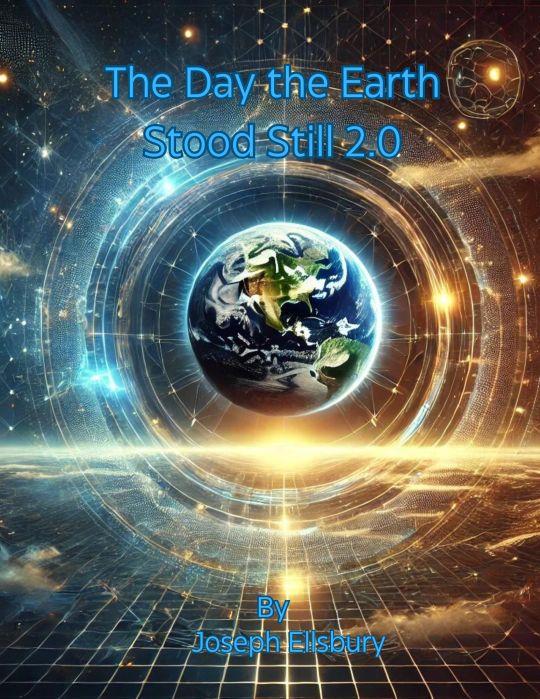
Big questions, big changes—that's the world we’re living in. If you’ve ever felt like the ground beneath our society is shifting faster than ever before, The Day The Earth Stood Still 2.0 is the book for you.
This isn’t just another “what if” book. It’s a reflection on the world as it is, the divides we’ve faced, and the evolution humanity needs to embrace. I take you on a journey through ideas that will challenge the way you think about society, technology, and even yourself.
Why does it feel like the old systems are breaking down?
What does it really mean to level up—not just as individuals but as a species?
How can we prepare for the seismic shifts that are coming?
Through the lens of my own experiences—my mental breaks, my growth, and my journey down the Bitcoin rabbit hole—I’ve put together a vision of what’s possible when we stop resisting change and start embracing it.
The Day The Earth Stood Still 2.0 is more than just a book; it’s a call to action. Whether you’re a dreamer, a thinker, or someone searching for answers in a chaotic world, this book is here to push you forward.
Let’s rewrite the future together. Because the clock is ticking, and the next block is coming.
Get your copy today and take the first step toward understanding the bigger picture. 🕰️📖
(Tick Tock. Next Block.)
🔗 https://www.amazon.com/dp/B0DTBV7KDJ
#Bitcoin#FinancialRevolution#TheDayTheEarthStoodStill#Philosophy#Society#Change#Innovation#FutureOfFinance#Evolution#PersonalGrowth#MentalHealth#Technology#Blockchain#Cryptocurrency#BitcoinStandard#NewWorld#HumanPotential#MindsetShift#NextBlock#TickTock#AmazonBooks#SelfPublishing#AuthorLife#DeepThoughts#GameChanger#Progress#Reflection#BreakTheSystem#RevolutionaryIdeas#ReadThis
1 note
·
View note
Text
Embrace the Future by Upskilling for the Future of Work
🚀 The future is here! With innovations like Elon Musk’s Optimus robot, it’s more important than ever to upskill. While robots may handle repetitive tasks, creativity, critical thinking, and emotional intelligence are irreplaceable human traits. Focus on honing these skills to thrive in the future of work. How are you preparing for tomorrow?
0 notes
Text
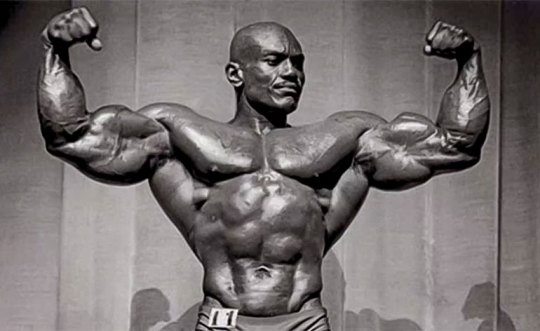
🏋️♂️ Sergio Oliva: Redefining Human Potential 💪 In the pantheon of bodybuilding greats, one name stands above all: Sergio "The Myth" Oliva. • 3x Mr. Olympia champion • Undefeated in 1968 • Intimidated even Arnold Schwarzenegger • Pioneered the "mass monster" look Oliva's journey from Cuban weightlifter to bodybuilding icon is a tale of determination, innovation, and sheer genetic brilliance. Witness the legend in action: https://youtu.be/8ooHptIPwn0?feature=shared Dive deep into Oliva's legacy: https://medium.com/@seangallasch/sergio-oliva-the-myth-unraveling-the-legacy-of-bodybuildings-greatest-icon-a01afbeaff01 Own a piece of bodybuilding history: https://www.primecutsbodybuilding.com
#SergioOliva#BodybuildingLegend#FitnessInspiration#MrOlympia#ClassicPhysique#BodybuildingHistory#HumanPotential
0 notes
Text
A litle bit of history of our profession-
0 notes